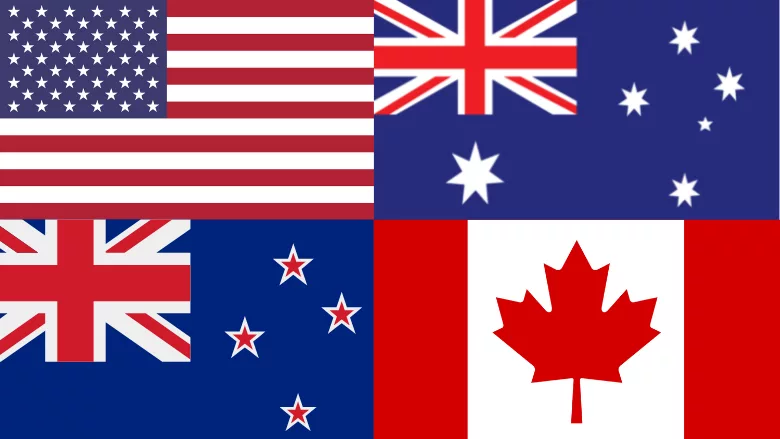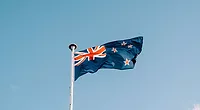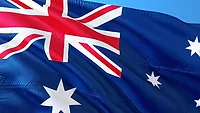Differences in Food Safety Controls: Australia, Canada, New Zealand, U.S.

Credit: ArtsyBee on Pixabay via Canva, Foxive on Pixabay via Canva, Twemoji via Canva, deMysticWay on Pixabay via Canva
The UK Food Standards Agency (FSA) commissioned an independent review of the national food control systems of Australia, Canada, New Zealand, and the U.S., which has revealed significant differences in how each country regulates food safety. Specifically, the review examined how the nations’ regulatory structure affects its sampling and testing activities.
Regulatory and Operational Frameworks
The review first notes the fragmented development and enforcement of food regulations in the U.S. and Australia. The sharing of responsibilities between multiple agencies in each nation has led to unequal regulatory oversight in different regions or between foods, even when levels of associated risk do not justify such disparities. In contrast, Canada and New Zealand’s food safety regulatory oversight is much more streamlined, allowing for the planning of various sampling activities by one agency. These countries’ entire food supplies are managed by a single regulatory authority from farm to fork, including animal feed and biosecurity.
Regardless of how fragmented or streamlined a nation’s regulatory oversight may be, the review found that, in all four countries, the execution of sampling activities was not always straightforward. Although most sampling for official controls and surveillance is handled by government officials, sampling for a number of programs are conducted by third-party contractors. Additionally, in certain cases, food business operators are legally responsible for taking samples, arranging testing, and submitting data to authorities. In Canada, for example, regulated businesses are required to share sampling and testing data with authorities, and the data is fed into establishment-based risk assessment models. The models then use the cumulative data to calculate the level of risk associated with a specific establishment and determine the level of oversight that it will receive.
Laboratories
The technological capacity of each nation to conduct testing and analysis was also varied. While the U.S., and to an even greater degree, Canada, benefit from a comprehensive, government laboratory infrastructure, Australia and New Zealand heavily rely on external laboratories that are accredited or government-approved. However, U.S. and Canada will still employ the services of third-party private laboratories when needed.
Requirements for Food Business Operators
While all four countries have some requirements around preventive controls, the level of detail and oversight for such requirements is higher in the U.S. and Canada than New Zealand and, especially, Australia. The U.S. Food and Drug Administration (FDA) and the Canadian Food Inspection Agency (CFIA) mandate that most food establishments implement specific preventive controls, and conduct sampling and testing activities to verify the efficacy of those controls. In New Zealand, most food businesses are beholden to preventive control requirements as well. However, in Australia, state- and territorial-level requirements were only noted for high-risk industry sectors.
Looking for quick answers on food safety topics?
Try Ask FSM, our new smart AI search tool.
Ask FSM →
Export and Import Controls
As each of the four countries is a major agrifood product exporter, there exists additional oversight for exporting establishments, such as mandatory participation in certain sampling and testing programs for microbiological hazards and chemical residues. The report also summarizes the different national import controls, which are predominantly risk-based.
Australia and New Zealand classify imported foods based on risk, and apply a higher level of scrutiny to high-risk foods. CIFA is also gradually adopting a risk-based approach, where product inspection and sampling is conducted through ongoing compliance verification of importers’ preventive control plans. CIFA also aims to develop a dedicated, establishment-based risk assessment model for importers that will automatically determine the appropriate frequency of inspection and sampling.
Finally, all FDA- and Tax and Trade Bureau (TTB)-regulated products require import documentation that is electronically screened by FDA upon entry to the U.S., at which point entries that are risky, incomplete, or contain inaccurate data are screened. Lower-risk imports with correct documentation may be allowed to enter the U.S. without further FDA review, however, all imported products that are regulated by the U.S. Department of Agriculture’s Food Safety and Inspection Service (USDA’s FSIS) are subject to inspection to verify the equivalence of inspection systems in exporting countries. Each product lot is subject to at least one type of inspection before it enters the U.S.
Other Sampling Activities and Information Management
The review acknowledges that each of the four countries periodically conduct nationwide total diet studies to assess consumers’ exposure to certain food safety risks. However, each nation differs in the frequency of their programs—be they ongoing, or taking place every two or five years—as well as how many kinds of foods and beverages are assessed, and which parameters are being tested.
Additionally, each country was observed using industry sampling and testing data in different ways, although the review was not able to identify in any of the four nations an industry intelligence sampling system that would be similar to the UK’s Food Industry Intelligence Network. Some nations require that industry share sampling and testing data with authorities, while in other countries, information-sharing is only encouraged.
Finally, the review noted ongoing efforts by FSIS and CFIA to take stock of each agency’s sampling activities. For instance, a strategic review of sampling resources at FSIS is expected to yield a semi-quantitative method to rank current and future sampling projects.








